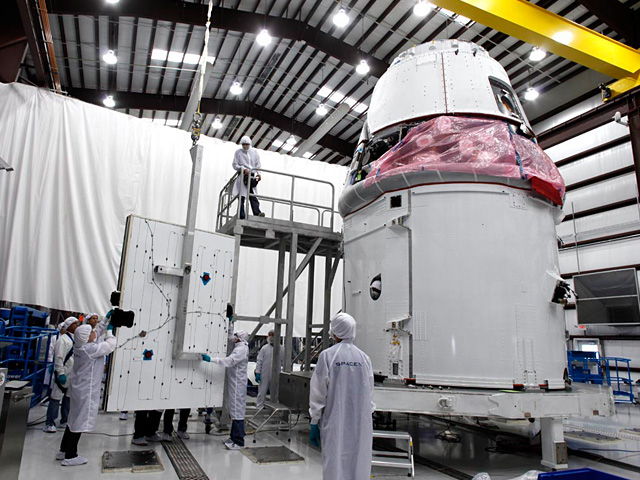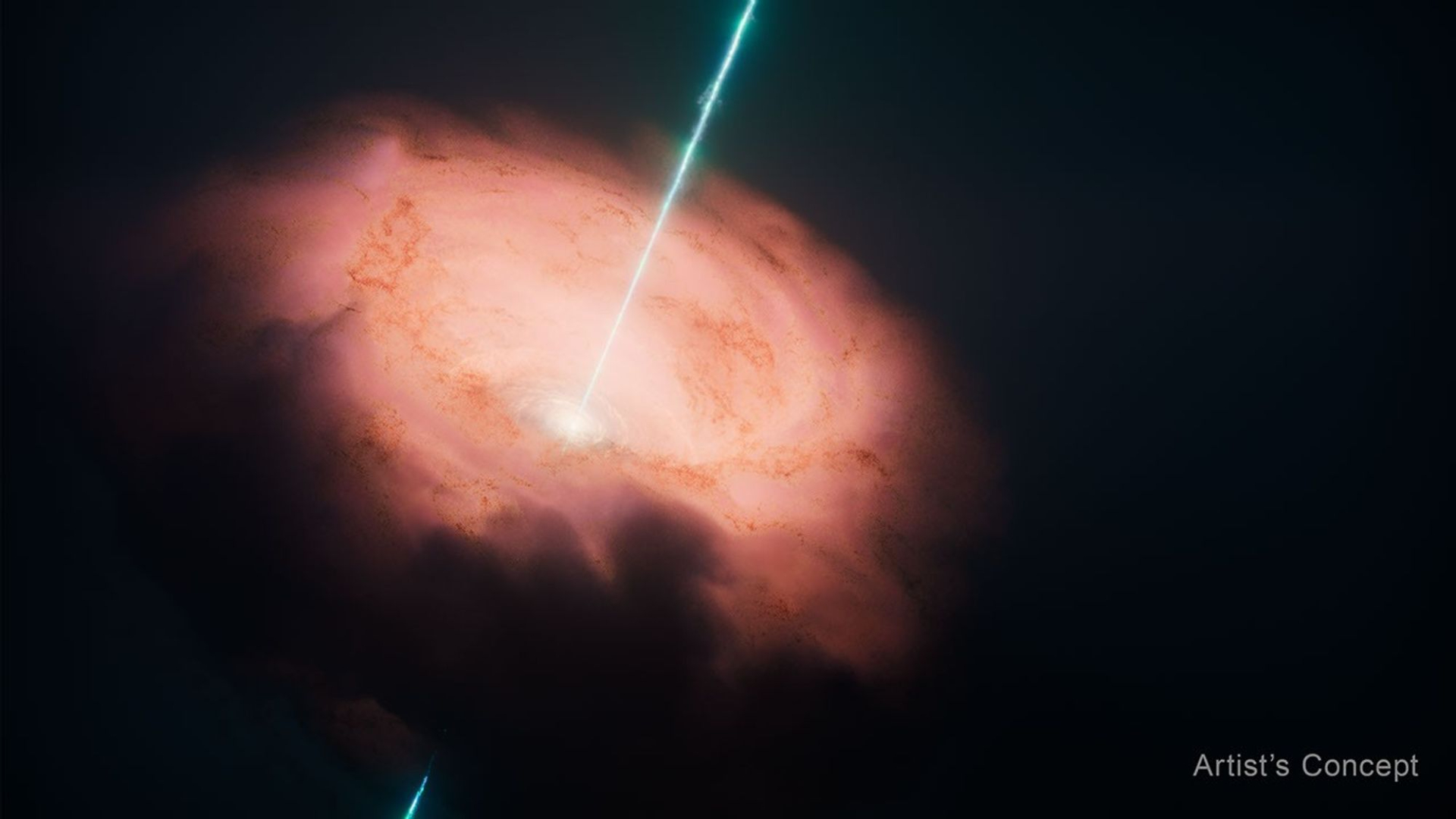Private Spaceflight Company SpaceX Has Lofty Goal: Help Save Humanity

NASA dominated American human spaceflight for more than 50 years, but in the 21st century private spaceflight companies are building new space taxis to launch more people into orbit. SPACE.com looks at the major players in the commercial spaceflight race in our week-long series: The Private Space Taxi Race. This is Part 1 in that series.
SpaceX plans to launch a historic demonstration mission to the International Space Station in early May, but the company's ambitions extend far beyond low-Earth orbit.
If all goes according to plan, SpaceX's unmanned Dragon capsule will blast into space in about two weeks, lifting off the pad at Florida's Cape Canaveral Air Force Station atop a Falcon 9 rocket. Once aloft, Dragon will berth with the orbiting lab — a first for a private spaceship — offload supplies and take some different items on for the trip back to Earth.
The mission — originally slated for April 30 but now likely pushed back to May 7, SpaceX officials announced today (April 23) — is a test to see if the Falcon 9/Dragon combo are ready to start making contracted cargo runs to the station for NASA. A successful flight would be a big step forward for private spaceflight, and it would set SpaceX more firmly on a path toward its ultimate goal: helping save humanity from extinction.
"I think it's important that humanity become a multiplanet species," SpaceX founder and CEO Elon Musk said in an interview that aired on CBS' "60 Minutes" last month. "I think most people would agree that a future where we are a spacefaring civilization is inspiring and exciting compared with one where we are forever confined to Earth until some eventual extinction event. That's really why I started SpaceX." [Gallery: Dragon, SpaceX's Private Spacecraft]
A cargo craft
When NASA retired its venerable space shuttle fleet last July, the United States became completely dependent on Russian, European and Japanese spaceships to carry cargo and crew into space.
Breaking space news, the latest updates on rocket launches, skywatching events and more!
But the space agency isn't content with this state of affairs. It's encouraging the development of private American spaceships, in the hopes that they can transport both supplies and astronauts to the space station in the near future.
The California-based firm SpaceX — short for Space Exploration Technologies Corp. — is one of the companies that NASA is counting on. SpaceX, which Musk started in 2002, holds a $1.6 billion NASA contract to make 12 robotic supply runs to the space station using the Dragon capsule and the Falcon 9. (Another company, Orbital Sciences Corp., signed a $1.9 billion deal to fly eight cargo missions for NASA.)
The Dragon/Falcon 9 pair already has one space success under its belt. In December 2010, SpaceX became the first private company to send a spacecraft into orbit and retrieve it safe and sound; it fished Dragon out of the Pacific Ocean after the capsule made two loops around our planet.
If the upcoming demonstration flight goes well, the first of SpaceX's 12 cargo missions could launch later this year, company officials have said. But even if it doesn't go well, the firm has no plans to give up.
"There should be no doubt about our resolve," Musk told reporters last week. "We will get to the space station, whether it's on this mission or on a future one."
SpaceX plans to launch Dragon two more times in 2012, he added, perhaps once in the summer and once toward the end of the year. Those missions could be bona fide cargo runs or further test flights, depending on how Dragon and the Falcon 9 do next week.
An astronaut taxi, too
Dragon is not just a cargo ship, however. SpaceX has always envisioned that it would carry astronauts someday, and the company's engineers are working to make that happen. [How SpaceX's Dragon Capsule Works (Infographic)]
Last year, NASA gave SpaceX $75 million to support the development of a launch-abort system for Dragon, a key requirement for a crew-carrying craft. Over the past two years, the agency has also given money to three other private spaceship builders — Blue Origin, Sierra Nevada and Boeing — in the hopes that at least two different commercial spacecraft can start ferrying astronauts to and from the space station by 2017.
According to Musk, SpaceX should be able to meet that deadline.
"There's a lot of variables between here and there," Musk said. But in a "perfect world" timeline, he added, "it's probably like three years — maybe a little less than three years."
Shooting for Mars
SpaceX is not content just to carry astronauts back and forth to low-Earth orbit. Musk wants Dragon to send humans to much more far-flung destinations, such as Mars, to help us become a multiplanet species.
"Ultimately, the thing that is super-important in the grand scale of history is, are we on a path to becoming a multiplanet species or not?" Musk said at a conference last year. "If we're not, well, that's not a very bright future. We'll simply be hanging out on Earth until some eventual calamity claims us."
To help get us farther afield, SpaceX is developing a huge rocket called the Falcon Heavy, which it hopes to launch for the first time in the next year or two. The vehicle will boast 4 million pounds of thrust, making it twice as powerful as any rocket in existence — and about half as powerful as the Saturn 5 rockets that carried astronauts to the moon during NASA's Apollo program, Musk said.
"So in principle, with two launches of Falcon Heavy and with some in-orbit docking, you could actually send people back to the surface of the moon, which is pretty exciting," Musk told SPACE.com in an interview earlier this month.
But SpaceX is dreaming even bigger than the Falcon Heavy. Last autumn, Musk announced that the company hopes to develop a fully reusable rocket, which would dramatically reduce the cost of lofting humans and cargo into space.
A completely reusable spaceflight system — in contrast to the expendable rockets in widespread use today — is the key to opening up the final frontier, making the exploration and colonization of other worlds much more feasible, Musk has said.
"In order to revolutionize space, we absolutely must have a fully and rapidly reusable rocket," he told SPACE.com. "This is basically the holy grail of rocket technology. A lot of people don't think it's possible, I should point out, which is why I call it the holy grail."
Musk thinks it is possible, though he acknowledges the difficulty of the task.
"But if we’re able to do that, then the cost of space transport can drop by a factor of 100," he said, then put the concept in terms that most people can appreciate firsthand. "Imagine if you had to buy a new car for every trip; you'd need two cars for a round-trip. You wouldn't be taking cars very much."
You can follow SPACE.com senior writer Mike Wall on Twitter: @michaeldwall. Follow SPACE.com for the latest in space science and exploration news on Twitter @Spacedotcom and on Facebook.

Michael Wall is a Senior Space Writer with Space.com and joined the team in 2010. He primarily covers exoplanets, spaceflight and military space, but has been known to dabble in the space art beat. His book about the search for alien life, "Out There," was published on Nov. 13, 2018. Before becoming a science writer, Michael worked as a herpetologist and wildlife biologist. He has a Ph.D. in evolutionary biology from the University of Sydney, Australia, a bachelor's degree from the University of Arizona, and a graduate certificate in science writing from the University of California, Santa Cruz. To find out what his latest project is, you can follow Michael on Twitter.

